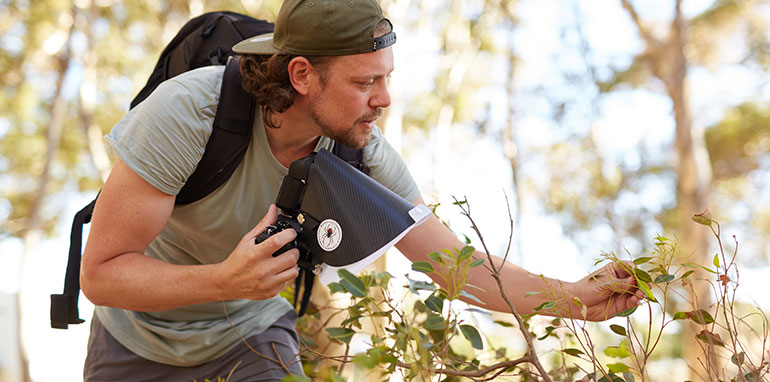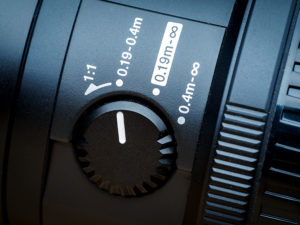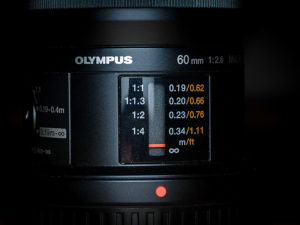07 May Best tips to master the OM System M.Zuiko 60mm Macro

The Micro-four-thirds sensor, and the OM System (formerly Olympus) MFT in particular, are undeniably perfect for macro photography.
If you want to use the many great features of the OM System camera’s software though, the choice of real macro lenses is still limited.
While third-party brands like Laowa offer quality lenses for MFT as well, they often come as pure manual lenses and cannot be used for features like focus bracketing or even in-camera stacking.
To use these automatic macro features, there is no way around the M.Zuiko Digital ED 60mm f2.8 Macro by OM System.
This lens is one of the lightest, sharpest and most compact macro lenses you can buy.
You can find my review (German language) of the M.Zuiko 60mm lens here.
Just recently OM System added an M.Zuiko Digital ED 90 mm F3.5 Macro IS PRO to its roadmap (Update 2023-02-10: the lens was just released, a review will follow asap).
Until then, the 60mm is the best lens to use with MFT.
Let´s have a look at the features of the 60mm and talk about some tricks & tips on how to best use it.
The 1:1 Shortcut dial (focus limiter dial)

With the focus limiter dial you can set the range and minimum focusing distance for the lens and its auto-focus.
The dial also allows you to instantly switch the magnification to 1:1.
It can be used as a literal shortcut by turning it to the 1:1 position and holding it until the lens adjusts its magnification setting.
By default, the camera/lens reset the magnification setting each time the camera is shut down.
There is, however, a neat little option hidden in the system menu, that allows the lens to remember the magnification set last.
This helps a lot, if you do not want to set the lens to its maximum magnification again and again.
If you shut the camera down regularly to save battery power for example, this will help a lot.
You can find the setting (on the OM-D E-M1 III) here: “Reset lens” in menu option A4.
The magnification display

The lens has a handy magnification display to show you the minimum focusing distance in relation to the chosen magnification factor.
This helps to quickly check which magnification you are currently photographing at, and gives you an impression about working distances at the same time.
Keep in mind, that the distances are measured from subject to sensor and not from subject to the front glass element, so in reality you will be closer, than to what is indicated in the display.
Get used to the handling of the M.Zuiko 60mm Macro
Operating the shortcut dial for the first couple times, especially when shooting at higher magnifications a lot, needs a bit of patience and adaption.
As soon as you get used to this, though, it makes controlling the lens very easy.
Using the tips for the 1:1 shortcut dial will speed up working with the lens considerably.
Get close

The M.Zuiko 60mm allows you to get really close.
Use its powers and try out different distances and magnifications.
It is very versatile, as it covers a long range of magnifications.
In combination with the MFT sensor, the 60mm focal length can bring out a lot of details if you try to get as close as possible – at 1:1 in particular.
If you are looking for extreme magnification and the 1:1 that the M.Zuiko 60mm is offering, is not enough for you, try adding a diopter lens, like a Raynox DCR250 or NiSi macro lens.
This will increase the magnification of the combined setup, and at the same time, give you the chance to reduce the original magnification setting of the 60mm for more depth-of-field.
Get low

This is not a specific tip for the M.Zuiko alone, but a general one in macro photography.
With its versatility though, the 60mm benefits from it exceptionally.
As we are used to look at the ‘world beneath our feet’ from above, it opens up a completely new field of view if we lower our position and angle.
In macro photography, proportions can get considerably exaggerated, the closer we get and the lower the angle is.
We can use this to our advantage and for interesting angles and compositions, that give our viewers a fresh view of the ‘tiny world’.
For extreme Macro Close-ups use a diffuser and a flash

If you want to effectively use the 1:1 magnification of the lens, it is important to get enough light on your scene.
Using a flash will both solve this problem and, at the same time, provide you with a powerful tool to technically freeze any motion of your tiny subjects (IF they move).
To provent your light source from being to harsh, the addition of a diffuser will massively improve the quality of your lighting and your macro photos in general.
If you want to know more about how diffusers work and which ones I would recommend, check out my article here.
Photos taken with the M.Zuiko 60mm macro lens




Where and why the 60mm is superior to other MFT macro lenses for OM System
As mentioned in the intro, one of the M.Zuiko 60mm´s biggest advantages is, that it is compatible to all the software functions of the OM System.
This means it can be used for both focus bracketing and focus stacking in camera.
While some other lenses also offer direct aperture control and EXIF communication, they are not able to work with the before mentioned modes.
The 60mm combines the most features of an MFT macro lens and is a very versatile solution.



Freddy Van Erp
Posted at 10:38h, 29 OctoberHello
May I ask you what your experience is with the lens hood LH-49 for the 60mm f/2.8 macro?
Is it an added value and therefore necessary?
Think to buy this lens hood despite it costing quite a lot!
Here in Belgium around 50€ for this tube
Thanks in advance for your opinion
Greetings from Belgium
Freddy
fvanerp@telenet.be
wildmacro-chris
Posted at 13:35h, 30 OctoberHi Freddy, i have it and i really like it, simply for the ingenious design, to slide back and forth BUT, when i shoot macro, i never have it on tbh, as i get very low and close and it would hinder me extended. If you are using the 60mm as a standard lens and not only for its macro capabilities, then it might be a good investment, but if you are using the 60mm mainly for (real close) macro, i´d say you can save that money. Hope that helps, best regards, Chris
Oly Spart
Posted at 11:01h, 06 NovemberI have to add that focus bracketing with this 60mm macro does not work on the EPL-6 unfortunately.
wildmacro-chris
Posted at 20:30h, 06 NovemberHi, thanks for the feedback, good to know – though this camera is a bit aged and i did not plan on publishing a list of compatible cameras, was referring more to current models and bigger ones as well, but as said, it´s good to know for anyone interested in this specific combination and, as you say, unfortunate, yes.
Oly Spart
Posted at 10:33h, 07 NovemberYes, it was not a critic of your article which is very interesting. But just an info.
Thank you.